TREVOSE, Pa.--(BUSINESS WIRE)--Comcast has completed expansion of its network throughout Hopewell and Maurice River townships, bringing its fast, reliable and fiber-rich network to the last nearly 350 unconnected rural homes and businesses in those towns in Cumberland County. The project was made possible by innovative public-private partnerships between Comcast and the township committees who sought to connect all of their residents to broadband.
“Every resident, farm and small business in our township now has a level playing field, with access to high-speed Internet for work, school, family, friends and entertainment,” said Hopewell Township Mayor Robin Freitag. "This achievement is the result of more than a decade of determined effort by our Township Committee. I want to especially thank former Mayor Paul Ritter and former Deputy Mayor Greg Facemyer, whose vision and persistence laid the groundwork for this success.” She added, “Our partnership with Comcast was a first-of-its-kind in New Jersey and it allowed us to extend network access quickly and in a cost-effective way to our constituents. We’re thrilled with the success and hope to provide a model for other towns looking to fill broadband deployment gaps in their communities.”
“Comcast is committed to ensuring everyone in Hopewell and Maurice River can fully participate in the digital economy, and we are proud to help township officials meet their goal of connecting every resident and business to broadband access,” said Dan Bonelli, Senior Vice President for Comcast’s Freedom Region. “These residents benefited from a truly collaborative effort that was able to deliver a fast and economical solution for all.”
"For years, we've worked to bring broadband access to every corner of Maurice River Township, and today that vision has come to fruition," said Maurice River Township Mayor Ken Whildin. "By strategically investing our American Rescue Plan funds and partnering with Comcast through a competitive RFP process, we've connected residents and businesses who have waited far too long for reliable high-speed Internet. This is about ensuring our families can work remotely, our students can learn online, and our small businesses can compete in the digital economy. I'm grateful to our Township Committee for their unwavering commitment to making universal broadband access a reality."
Residents have been notified that they are eligible for service and can visit Xfinity.com or visit our Xfinity Store conveniently located at 2160 North Second Street, Millville, NJ, to sign up. Experts at the Xfinity Store can help with product demonstrations, answer any questions new customers may have and can help local businesses schedule an informational meeting with the Comcast Business sales team.
Xfinity’s Full Suite of Residential Services
Comcast’s suite of residential Xfinity services are available in Hopewell and Maurice River, including high-speed Internet, streaming, mobile, voice, and home security – delivering reliable, connected experiences for today’s consumers at home or on the go.
Comcast Business: Technology Solutions for Businesses of Any Size
Comcast Business delivers powerful, secure, and always-on connectivity tailored to meet the needs of businesses – whether small startups or growing enterprises. With fast, reliable Internet and advanced networking solutions like SD-WAN, cloud connectivity, and unified communications, Comcast Business helps organizations stay connected, protected, and ready to scale.
For businesses on the move, Comcast Business Mobile offers fast, dependable 5G, flexible data plans, and access to over 23 million WiFi hotspots nationwide. With features like 4K streaming, advanced spam call blocking, and twice-a-year phone upgrades, it’s a mobile solution designed to keep teams productive—wherever business takes them.
What It Means for the Community
Comcast’s commitment to communities goes beyond building the network and aims to increase economic mobility for the local community and its residents. That’s why Comcast created Internet Essentials, a broadband adoption program that offers eligible households low-cost, high-speed Internet and affordable computers. Additionally, Comcast has made significant investments into New Jersey nonprofits focused on helping people build digital skills, expanding WiFi-connected Lift Zones, and funding connectivity and Internet adoption programs.
About Comcast Corporation
Comcast Corporation (Nasdaq: CMCSA) is a global media and technology company. From the connectivity and platforms we provide, to the content and experiences we create, our businesses reach hundreds of millions of customers, viewers, and guests worldwide. We deliver world-class broadband, wireless, and video through Xfinity, Comcast Business, and Sky; produce, distribute, and stream leading entertainment, sports, and news through brands including NBC, Telemundo, Universal, Peacock, and Sky; and bring incredible theme parks and attractions to life through Universal Destinations & Experiences. Visit www.comcastcorporation.com for more information.

 609-455-2886
609-455-2886




 Service Areas
Service Areas























